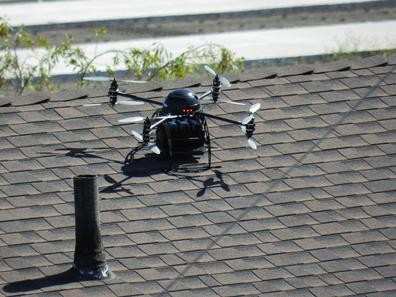AUVSI Applauds The Move
The International Association of Chiefs of Police (IACP) has guidelines for the use of unmanned aircraft systems (UAS). The guidelines provide law enforcement agencies an outline of how to use UAS safely and responsibly, and with respect to individuals’ privacy. The adoption of the IACP guidelines follows the recent adoption of AUVSI’s “Code of Conduct” for those who design, test and operate Unmanned Aerial Systems.

In announcing the approval, the IACP said its Aviation Committee has been involved in the development of unmanned aircraft policy and regulations for several years. In the guidelines, the organization said that law enforcement agencies desiring to use UA should first determine how they will use this technology, including the costs and benefits to be gained. The agency should then engage their community early in the planning process, including their governing body and civil liberties advocates. The agency should assure the community that it values the protections provided citizens by the U.S. Constitution. Further, the agency will operate the aircraft in full compliance with the mandates of the Constitution, federal, state and local law governing search and seizure.
The police chiefs added that communities should be provided an opportunity to review and comment on agency procedures as they are being drafted. Where appropriate, recommendations should be considered for adoption in the policy. And as with the community, the news media should be brought into the process early in its development.

“We applaud the IACP for putting forward these guidelines as part of law enforcement’s simultaneous commitment to protect communities, as well as the rights of the members of those communities,” said Michael Toscano, president and CEO of AUVSI. “Unmanned aircraft could help law enforcement agencies with missions such as search and rescue or crime scene photography, often at a lower cost than manned aircraft. The more the law enforcement community, privacy advocates, government and other stakeholders work together to address issues such as privacy, the faster we can unlock the incredible potential of unmanned aircraft to help save time, save money and most importantly, save lives.”
AUVSI said that a poll conducted earlier this year by Monmouth University found strong public support for law enforcement’s use of UAS in search and rescue missions, tracking runaway criminals, protecting U.S. borders and controlling illegal immigration. Currently, however, fewer than 3 percent of law enforcement units have aviation assets because of the high operating costs of manned aircraft. UAS provide a cost-effective alternative. The Sheriff’s Office in Mesa County, Colo., operates an unmanned aircraft at the cost of $3.36 per hour, compared to $250 to $600 per hour for a manned aircraft. The purchase price of a UAS is also significantly less than a manned aircraft, costing about the price of a patrol car with standard police gear. The vast majority of UAS currently flying in the U.S. are small models that weigh less than 25 lbs and can fit in the trunk of a car.
 Classic Aero-TV: Extra Aircraft Announces the Extra 330SX
Classic Aero-TV: Extra Aircraft Announces the Extra 330SX Aero-News: Quote of the Day (11.15.25)
Aero-News: Quote of the Day (11.15.25) ANN's Daily Aero-Term (11.15.25): Middle Marker
ANN's Daily Aero-Term (11.15.25): Middle Marker NTSB Final Report: Lancair 320
NTSB Final Report: Lancair 320 Airborne 11.14.25: Last DC-8 Retires, Boeing Recovery, Teeny Trig TXP
Airborne 11.14.25: Last DC-8 Retires, Boeing Recovery, Teeny Trig TXP




